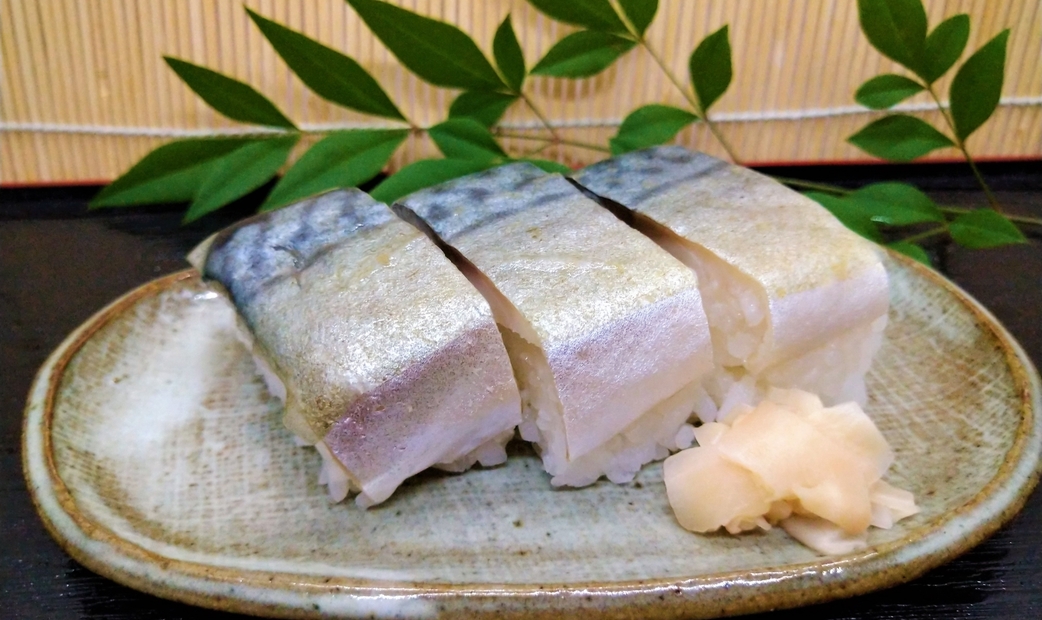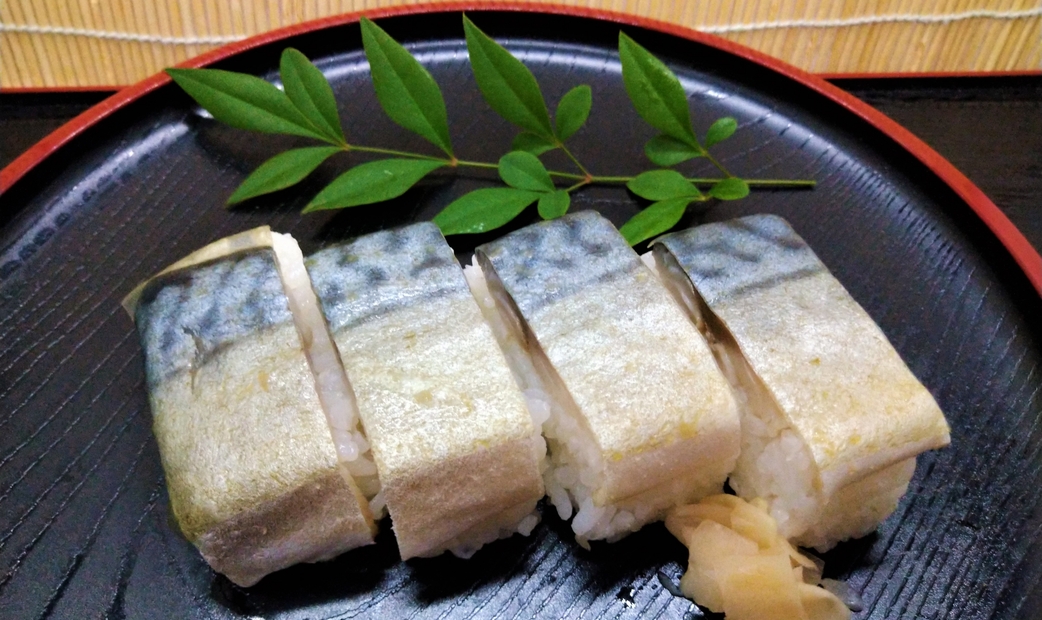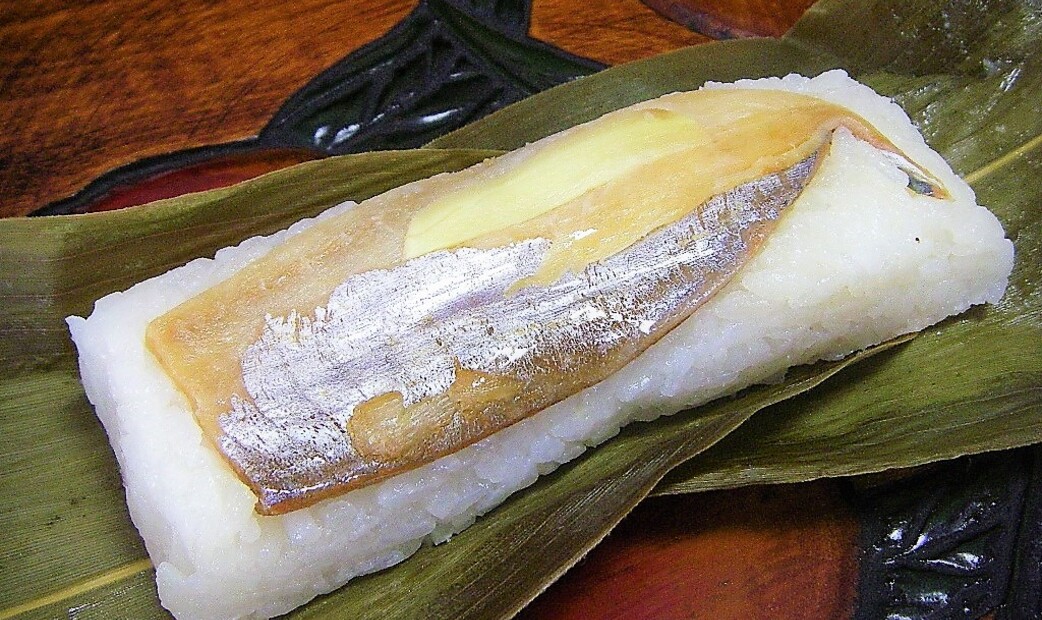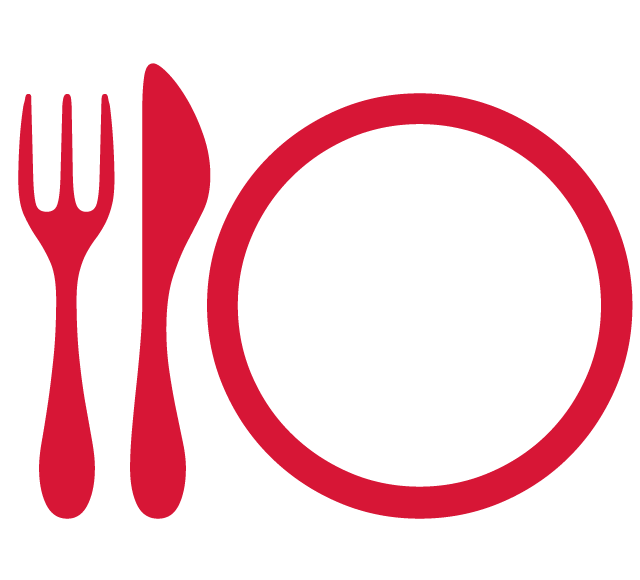
The Allure and History of Oshizushi: Savoring Tradition at Michelin-Starred Restaurants
As an official Michelin partner, the OMAKASE editorial team explores the rich history of oshizushi and highlights Michelin-starred restaurants where you can enjoy this exquisite traditional sushi.
What is Oshizushi?
Oshizushi is a type of sushi that originated in the Kansai region of Japan. It is made by pressing fish and rice together into a rectangular shape using a mold. The version made with mackerel, called battera, is especially well-known in Japan.

The History of Oshizushi
Oshizushi’s roots trace back to Nare-zushi, a traditional method developed in Kansai. Nare-zushi involves fermenting fish, such as carp, in rice for months or even years, and then pressing it into shape. This pressing technique evolved into what we now recognize as oshizushi.

Oshizushi in the United States
In the U.S., aburi salmon oshizushi is a popular variation. It involves pressing the salmon sushi and then lightly searing it. In Japan, however, aburi salmon oshizushi is less commonly found.

Traditional Oshizushi in Japan
Traditional oshizushi in Japan is usually made with locally sourced ingredients and popular fish. As a result, many regional variations of oshizushi are still loved and enjoyed across the country today. The preparation typically involves pressing fish and rice into a mold, with square, box-shaped molds commonly used to create a type known as Hako-zushi. The term Osaka-zushi refers to sushi types that have been a part of Osaka’s culinary tradition for centuries, such as battera (mackerel oshizushi) and maki-zushi (rolled sushi).

Types of Traditional Oshizushi in Japan
In Japan, there are many different types of oshizushi, each with its regional flair.
Battera

This type of oshizushi originated in Osaka and is made by pressing thin slices of vinegar-marinated mackerel, vinegared rice, and kombu (kelp) together. While it has roots in Osaka, it is enjoyed throughout Japan and can even be found at conveyor-belt sushi restaurants.
Iwakuni-zushi

Iwakuni-zushi comes from Yamaguchi and features local ingredients such as pickled lotus root, lettuce, conger eel, and shredded omelet. It is known for its large size, with some pieces reaching up to 60 cm square. Traditionally made for celebrations and as offerings, it’s a special dish in the region.
Sasa-zushi

Sasa-zushi hails from Ishikawa and is made by wrapping vinegared rice and various ingredients in sasa (bamboo leaves). Seasonal ingredients like sardines in spring and mackerel or dolphinfish in the fall are often used. In Ishikawa, it is sold in supermarkets, making it a convenient and beloved dish.
Nare-zushi

Also known as Funa-zushi, this traditional sushi is made by fermenting fish like carp in rice. Nare-zushi is believed to have been brought to Japan in the 700s. Though popular in the Kansai region, its strong and unique flavor isn’t for everyone. It has been a part of the culinary tradition around Lake Biwa in Shiga for generations.
Kaki-no-ha-zushi

Originating in Nara, this type of oshizushi is wrapped in kaki-no-ha (persimmon leaves), which are believed to have preservative properties due to the tannins they contain. The sushi is made by pressing mackerel or salmon with vinegared rice and wrapping it in the leaves. The leaves impart a pleasant aroma, enhancing the flavor as it sits wrapped for a while.
Differences Between Saba-zushi and Battera-sushi
Saba-zushi and battera-sushi are often confused, but they are quite different. Saba-zushi is made with half a mackerel, which is wrapped in vinegared rice using a bamboo mat to form a stick-shaped sushi. The mackerel is typically marinated in vinegar or grilled. It is particularly famous in Kyoto and offers a satisfying portion due to the use of half a fish. On the other hand, battera-sushi uses thinly sliced mackerel. The mackerel, along with kombu and vinegared rice, is packed into a box-shaped mold and pressed to form a pressed sushi. The mackerel is generally marinated in vinegar. Battera-sushi is enjoyed nationwide and is sometimes served at conveyor-belt sushi restaurants.

How to Make Oshizushi
Ingredient
- Vinegared rice
- Your choice of ingredients (such as sashimi, shrimp, rolled omelet, shiitake mushrooms, dried gourd strips known as kanpyo, etc.)
- A pressed sushi mold (or a milk carton as a substitute)
Preparing the Mold:
Line the mold with plastic wrap to make it easier to remove the sushi later.
1. Arrange the Ingredients:
Neatly arrange your chosen ingredients at the bottom of the mold, paying attention to the presentation.
2. Fill with Vinegared Rice:
Add the vinegared rice into the mold and use a rice paddle or spoon to flatten it evenly.
3. Press with a Pressing Board:
- Place the pressing board on top and apply gentle pressure to press the sushi.
- After a few moments, the shape will set.

4. Remove and Cut:
- Carefully remove the sushi from the mold and cut it into bite-sized pieces with a knife.
- Wetting the knife beforehand helps prevent the rice from sticking.
5. Plate and Serve:
Arrange the sushi on a plate and serve with soy sauce or pickled ginger, if desired.
Where to Enjoy Oshizushi
Oshizushi is commonly served at casual eateries, but it's rarely found at upscale restaurants. You can sometimes find it at conveyor belt sushi restaurants or even supermarkets.
Michelin-Starred Restaurants in Osaka and Kyoto Offering Oshizushi
Sushi Tune (寿司常) /osaka
Sushi Tune, established in 1891, is a historic restaurant renowned as the birthplace of battera (mackerel oshizushi). The oshizushi, made using a traditional boat-shaped wooden mold, boasts a classic flavor with a layer of white kelp. Now run by the fourth generation, the restaurant continues to preserve this craft, offering a wide range of sushi, including mackerel and conger eel oshizushi, as well as Temari-sushi (small ball-shaped sushi), providing a true taste of Kansai's sushi culture.
Izuu (いづう) / kyoto
Izuu, a historic sushi restaurant founded in 1781, has been serving customers for over 200 years and is currently run by the eighth generation. It has earned a Bib Gourmand. The restaurant's signature dish is saba-zushi, made by salting mackerel from Wakasa Bay and pressing it with kelp to create oshizushi. Since the Edo period, Izuu has been providing catering to Kyoto's geisha districts, maintaining and preserving the traditional flavors of the city.
Izugen (いづ源) / kyoto
Izugen, a Kyoto sushi restaurant established in 1924, is a branch of Izuu and has earned a Bib Gourmand. The third-generation owner continues to preserve tradition, using sushi rice cooked with kombu and bonito broth. The restaurant is known for its popular sushi platter, featuring three types: saba-zushi, hako-zushi, and maki-zushi. A unique aspect of Izugen is its focus on Kyoto-style sushi, which is not hand-pressed, and as a result, the restaurant does not have a counter.
Michelin Sushi Restaurants in Kyoto and Osaka – Available for Reservations
Sushi Rakumi / kyoto
Sushi Rakumi, an Edo-style sushi restaurant, opened in 2019 under the direction of Gion Sasaki, one of Kyoto’s most difficult Michelin 3-star restaurants to get a reservation at. The owner, a seasoned chef who trained at Gion Sasaki and honed his skills at Sushi Yoshitake in Ginza, brings a high level of expertise to the restaurant. Guests can enjoy a unique fusion of traditional Kyoto cuisine and Edo-style sushi techniques. The stunning views from the restaurant’s interior are also a major highlight.
- Operation hours
- Lunch: 12:00 PM -
Dinner: 5:00 PM - 10:00 PM - Regular holiday
- Sundays, Irregular Holidays
- Price range
-
Lunch: USD 177.24 - USD 177.24
Dinner: USD 368.65 - USD 368.65 - Address
- 332-6, Miyoshi-cho, Higashiyama Ward, Kyoto-shi, Kyoto
- Nearest station
- Sanjo Station, Sanjo Keihan Station, Gion-Shijo Station
- Directions from station
- 5 minutes walk from Sanjo Station
6 minutes walk from Sanjo Keihan Station
8-minutes walk from Gion-Shijo Station - Payment methods
- Cash, Credit card
- Seats
- 8 Seats
- Awards
-
Michelin
-
Andrew Nguyen5.0Posted on :09/12/2025
-
Anna Collins5.0Posted on :01/12/2025
-
Dale5.0Posted on :12/19/2024
Sushi Hayashi / kyoto
Nestled in a quiet area north of the Kyoto Imperial Palace, Sushi Hayashi is a Michelin one-star restaurant and a hidden gem. The owner, Yoshio Hayashi, brings international experience from his time working at hotels in Switzerland and Sushi Wakon in the Four Seasons Hotel Kyoto. The restaurant offers an omakase (chef’s choice) course featuring fresh ingredients from the Kansai region, including Mie, Wakayama, and Awaji, as well as Kyoto-style sushi. A diverse selection of drinks, including rare Swiss wines, further enhances the experience.
- Operation hours
- Lunch: 12:00 PM - 2:00 PM
Dinner: 6:00 PM - 9:00 PM - Regular holiday
- Wednesdays, Thursdays
- Price range
-
Lunch: USD 155.97 - USD 241.75
Dinner: USD 241.75 - USD 443.09 - Address
- Grancosmo Gosho 101, 31-1, Omotecho, Kamigyo-ku, Kyoto-shi, Kyoto
- Nearest station
- Demachiyanagi Station
- Directions from station
- 6 minutes walk from Demachiyanagi Station
- Payment methods
- Cash, Credit card
- Seats
- 8 Seats
- Awards
-
Michelin

-
Pedro Hernández4.0Posted on :06/23/2025
-
Samantha5.0Posted on :05/08/2025
-
Willie Chung4.7Posted on :05/06/2025
Sushi Yuden / osaka
Sushi Yuden has earned a Michelin one-star rating. The owner, who trained at the century-old Fukuki Zushi and refined his hospitality skills at The Ritz-Carlton Kyoto’s Sushi Mizuki, has now struck out on his own. The restaurant serves Edo-style sushi, focusing on the perfect balance between carefully selected market-fresh ingredients and rice. The eight-seat counter is crafted from a single slab of Hinoki wood, over 160 years old. With its serene atmosphere, it's a place where guests can comfortably enjoy their meal solo.
- Operation hours
- Lunch: 12:00 PM - / 12:30 PM -
Dinner: 05:30 PM - 11:00 PM - Regular holiday
- Mondays, Irregular Holidays
- Price range
-
Lunch: USD 214.46 - USD 214.46
Dinner: USD 214.46 - USD 273.91 - Address
- 1F Kitaoka Building, 3-8-25 Ueshio, Tennoji-ku, Osaka-shi, Osaka
- Nearest station
- Tanimachi 9-chome Station
- Directions from station
- 1 minute walk from Tanimachi 9-chome Station
- Payment methods
- Cash, Credit card
- Seats
- 8 Seats
- Awards
-
Michelin

-
Christian Martin4.8Posted on :04/22/2025
-
Pamika5.0Posted on :03/13/2025
-
Daniel Mikhailov5.0Posted on :12/22/2024
Sushi Hoshiyama / Osaka
Sushi Hoshiyama has maintained its Michelin one-star rating for over a decade. This celebrated Osaka restaurant specializes in classic Edo-style sushi. Owner Tadashi Hoshiyama honed his skills for seven years at Tsukiji Sushi Sei and five years at Sushi Matsumoto before striking out on his own. Guests can enjoy traditional Edo-style sushi paired with sake served in Baccarat antique glasses. It's an elegant establishment where the chefs' meticulous craftsmanship takes center stage.
- Operation hours
- Part 1: 5:30 PM or 6:00 PM (Check-out by 8:15 PM)
Part 2: 8:30 PM - Regular holiday
- Tuesdays
- Price range
- Dinner: USD 218.36 - USD 233.95
- Address
- 1F, Tillit's Hus, 1-16, Sugawaracho, Kita-ku,, Osaka-shi, Osaka
- Nearest station
- Kitahama Station
- Directions from station
- 5 minutes walk from Kitahama Station
- Payment methods
- Cash only
- Seats
- 8 Seats
- Awards
-
Michelin
-
Samantha good5.0Posted on :06/29/2025
-
old bird4.3Posted on :04/13/2025
-
Gabriella Kissinger4.8Posted on :04/10/2025


